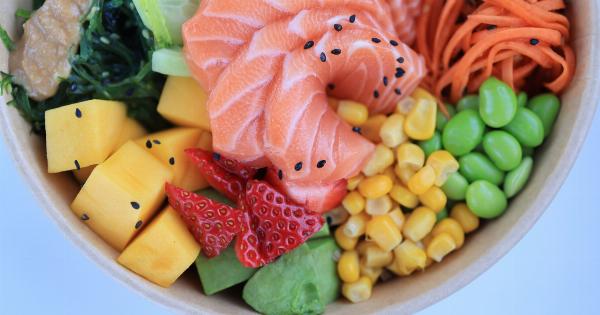When we talk about healthy eating, we often hear about the importance of eating a balanced and nutritious diet. One of the key factors that contribute to the overall healthfulness of our diets is the variety and quality of nutrients that we consume.
While there are many different types of nutrients that our bodies need to thrive, one group in particular stands out for their colorful and vibrant properties. In this article, we’ll take a closer look at these colorful nutrients and explore why they’re such an important component of any healthy diet.
The Role of Nutrients in a Healthy Diet
Before we delve into the specifics of colorful nutrients, let’s first take a moment to talk about the role that nutrients play in our overall health. Nutrients are substances that our bodies need in order to function properly.
They provide us with energy, help to build and repair our tissues, and regulate our bodily processes. Since our bodies can’t produce many of these essential nutrients on their own, we need to get them from the foods that we eat.
There are six main types of nutrients that our bodies need: carbohydrates, proteins, fats, vitamins, minerals, and water.
Each of these nutrients plays a unique role in keeping us healthy, and we need them in varying amounts depending on our age, gender, and activity level.
What Are Colorful Nutrients?
While we often think of nutrients in terms of their specific categories (carbs, proteins, etc.), there’s another way to classify them that’s gaining popularity among nutrition experts: by their color.
Colorful nutrients are those that give fruits and vegetables their vibrant hues, and they’re some of the most beneficial nutrients that we can consume.
One of the primary benefits of colorful nutrients is that they’re packed with antioxidants.
These are compounds that help to protect our cells from damage caused by free radicals, which are byproducts of metabolism that can lead to chronic disease over time. By consuming foods that are high in antioxidants, we can help to safeguard our cells and keep our bodies healthy.
The Benefits of Colorful Nutrients
So, what are some of the specific benefits of consuming foods that are rich in colorful nutrients? Here are just a few:.
Reduced Risk of Chronic Disease
As mentioned earlier, colorful nutrients are rich in antioxidants, which can help to protect our cells from damage over time.
This means that consuming a diet that’s high in colorful fruits and vegetables may be associated with a reduced risk of chronic diseases like heart disease, diabetes, and cancer.
Better Eye Health
Many colorful nutrients are great for our eyes, as well. For example, beta-carotene is a type of colorful nutrient that’s converted into vitamin A in the body.
This vitamin is essential for maintaining healthy vision, and consuming foods that are rich in beta-carotene (like leafy greens and sweet potatoes) can help to keep our eyes functioning optimally. Other colorful nutrients, like lutein and zeaxanthin, are also important for eye health.
Improved Digestion
Consuming foods that are rich in fiber (which is itself a type of nutrient) can help to improve digestion and keep our gastrointestinal tract healthy.
Many colorful fruits and vegetables are high in fiber, making them a great choice for anyone looking to optimize their digestive health.
Enhanced Brain Function
Finally, many colorful nutrients have been linked to improved cognitive function. For example, flavonoids (which are found in many colorful fruits and vegetables) have been shown to improve memory and cognitive performance in some studies.
How to Incorporate Colorful Nutrients into Your Diet
Now that you’re convinced of the importance of colorful nutrients, you might be wondering how to incorporate them into your diet. Here are a few tips to get you started:.
Eat the Rainbow
The most important thing to keep in mind when it comes to colorful nutrients is to eat a variety of different fruits and vegetables. Aim to consume foods of all different colors, from bright red berries to dark green leafy vegetables.
Experiment with New Foods
Another great way to incorporate more colorful nutrients into your diet is to experiment with new foods.
Many people get stuck in a rut of eating the same fruits and vegetables over and over again, but there are so many tasty and nutritious options out there. Try incorporating a new type of produce into your meals each week to keep things interesting.
Get Creative with Your Cooking
Finally, don’t be afraid to get creative in the kitchen. There are so many ways to prepare fruits and vegetables that are both delicious and nutritious.
For example, you could try roasting your vegetables with a little bit of olive oil and seasoning, or using fruits in a smoothie or salad.
Conclusion
Colorful nutrients are an essential component of any healthy diet. They provide us with a range of benefits, from protection against chronic disease to better brain function.
By incorporating a variety of colorful fruits and vegetables into your meals, you can help to ensure that you’re getting all of the essential nutrients that your body needs to thrive.





























